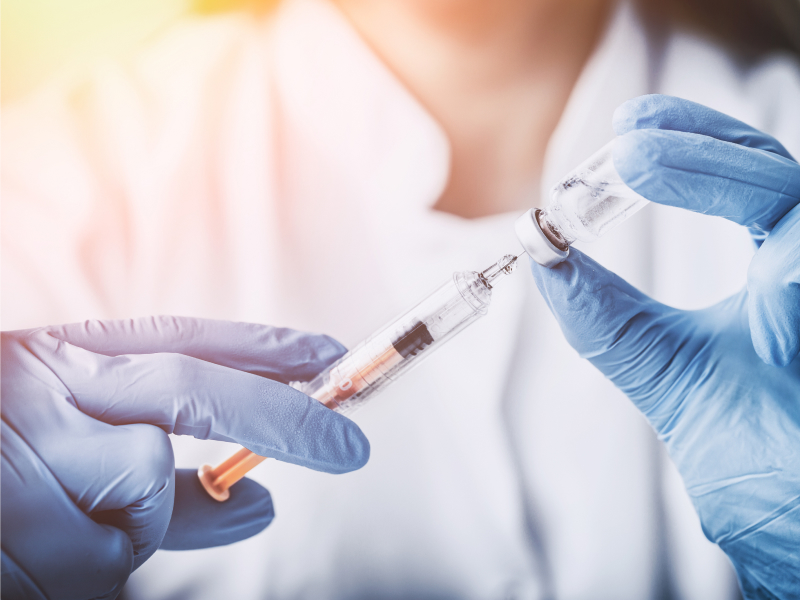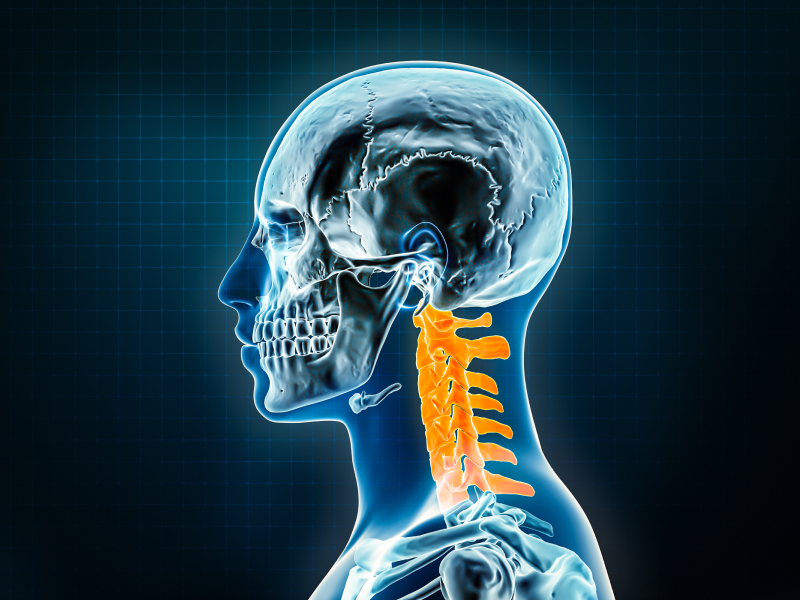Cranial Cervical instability (CCI) is a condition that occurs when the ligaments and connective tissues in the neck and head are damaged or weakened. This causes excessive movement in the upper neck and skull, which can lead to a variety of symptoms.
Some of the most painful conditions a person may face are caused by brain, head, and spine conditions. CCI is a headache-inducing ailment that involves corruption of the ligamentous connections. People with CCI experience looseness where the skull meets the spine.
Symptoms of Cranio-cervical Instability (CCI) include:
- Chronic headaches
- Neck pain, especially at the base of skull
- Vertigo, dizziness, brain fog
- Cognitive impairment
- Tachycardia (rapid heart rate)
- Orthostatic intolerance
(low blood pressure when standing) - Syncope (fainting)
- Polydipsia (extreme thirst)
- Heat intolerance
- Delayed gastric emptying
Causes of CCI include:
- Physical trauma, such as a car accident or whiplash
- Inflammatory diseases, such as rheumatoid arthritis
- Congenital disorders, such as Down’s syndrome
- Hereditary disorders of connective tissue, such as Ehlers-Danlos syndromes (EDS)
- Infections
Treatments of CCI include:
- Physical therapy
- Chiropractic adjustments
- Medications
- Surgical interventions, such as cervical spine fusion surgery
- Regenerative Injection therapies include PRP also known as Platelet-rich Plasma treatments
Listen to the Interview with Dr. Ryan Wood about CCI Treatments:
Transcript of our Interview:
Q: How did you become a specialist in treating Cranio-cervical Instability?
A: I began finding people that were coming in with a consistent set of symptoms that was complicated. They were presenting with these complex neurological problems and neck pain and headaches. So, we have a consistent group of people that were coming in who were dizzy, who had consistent headaches, suboccipital headaches. They were having ocular forms of visual change, so like ocular migraines, they were having trouble tracking things. They were having things like apnea at night and problems with their sleep, sleep disturbances.

“You can think of EDS people being the opposite of a steel cable – super bendy, but doesn’t hold a lot of load.” – Dr. Ryan Wood
They were getting very, very frequently, almost every single person was having some form of dizziness, vertigo, brain fog, sort of this feeling of pressure in their head.
And most of these cases stemmed from either them being a patient who had some form of hypermobile spectrum disorder, like Ehlers-Danlos syndromes (EDS) where their bodies are producing too much of a type of collagen that gives them too much elasticity and not enough tensile strength.
Or, these people had some form of upper cervical injury, like a car accident or a combination thereof really. What we typically see are these slightly hypermobile people that have had recurrent MVAs like motor vehicle accidents.
So, after several years of consistently seeing these people. Like most practitioners, you tend to be curious about things that you see regularly. And I am one of those people that when I start to see things over and over again, I just begin to do my research and work diligently, trying to find an answer to sort of find a home for these people and a care plan that can work.
Q: What led to perfecting cervical spine injections with regenerative medicines?
A: When I was in my fellowship, I spent a lot of time learning how to inject on necks. Probably the first 400 necks I injected I did without any guidance, there’s just blind injections, which isn’t the greatest thing.
As I got more proficient with ultrasound, I began to spend a lot of time just scanning the cervical spine, and based off of my palpation-based sort of dextrose classic dextrose prolotherapy injection background, I started combining that with the image guidance, the ultrasound image guidance.

“I got to this point where I perfected a way of injecting cervical spines,
specifically to people that have cranial cervical instability.” – Dr. Ryan Wood
Q: Can you explain a bit more about the condition of Cranial Cervical Instability?
A: What CCI is is laxity typically in the upper couple of vertebrae in the neck, usually at the C1-C2level.
NOTE: The C1 and C2 vertebrae are the first two vertebrae at the top of the cervical spine.
Together they form the atlantoaxial joint, which is a pivot joint.
The C1-C2 is a complicated bone structure in the body. It’s very unique. C1 is like a steering wheel that sits on a pinion, and it spins on that pinion. And there are a bunch of ligaments that hold basically this ring onto this pinion. And if any of those ligaments are damaged, it creates a situation where that first vertebrae is moving dramatically more than it should.
And if you understand that there’s a spinal cord sitting right in that area, when that vertebra begins to move too much, you literally get some form of impingement, compression or vascular change on CSF flow around the brainstem because the brainstem is right there.

Cranial cervical instability is instability in the upper cervical spine that affects the brainstem.
And when the brainstem is affronted—if it’s pissed off, for lack of a better word—by this hypermobility or gross mobility on the upper cervical spine and you irritate that brainstem, you get headaches. But the underlying root cause is typically some form of cranial cervical instability, which is that laxity in C1-2.
So, putting it all together because I started to, I’m one of the guys in the city that’s actually interested in this, and I am skilled enough with a needle to inject spine. And also I’m not shy about it, I don’t have any quandary whatsoever about placing a needle a couple millimeters from somebody’s spine, spinal cord or dura. And I just did more and more and more of them. And to be frank, I self-taught most of what I learned.
I think I pioneered a few techniques along the way. For example, this morning, a very well-known colleague of mine, he’s the ex-president of the American Academy of Orthopedic Medicine. He’s a world famous interventional regenerative orthopedist, Brian Shipel asked me to teach him how to do ultrasound guided injections on C-0 C-1-2.
So, I’ve gotten to this point in my career where I’m not only injecting for cranial cervical instability, but I’m also teaching thought leaders in the industry and some of the old guard how to do this.
Q: Is your main goal and focus to ‘create stability out of instability’?
A: So, without using X-ray guided injections, we are treating cranial cervical instability.
We treat C-0, C-1-2, the full spine. (Using ultra-sound guided injections)
We treat all the ligaments, all the muscles, all their origin and insertions.
We hydro-dissect out complex nerves that are associated with this condition.
Our treatment paradigms then are to perform extremely precise guided interventional injections specific to areas of the spine that have damage and ligament laxity.
And in the injectate that we use, we are able to tighten up, restore, or heal some of the damage to the ligaments, the capsules, and create stability out of instability. So, that’s our main goal and focus.
Q: What is in these injections that is tightening up and healing ligaments?
A: We use what’s called orthobiologics, which is things like PRP or platelet release aid or platelet rich fibrinogen or these things that are safer to use near structures that aren’t going to harm someone.
So, in the PRP itself, PRP is a Platelet-rich plasma. It’s essentially taking whole blood through a centrifugal process. Through centrifugation of the whole blood, we are able to isolate out cells that we want or part cell like platelets. We’re able to isolate out these platelets from whole blood and concentrate them very, very highly.
And once they’re concentrated, platelets contain growth factors and other things that help repair remodeling restoration of tissue, anti-inflammatory properties, and tend to heal things.
For example, if somebody has gross laxity in their upper cervical spine and we’re able to put some PRP into and around the joints and the ligaments in the tendons in this area, we can help the body heal and restore those damaged areas.
Dextrose prolotherapy is awesome for people with hypermobility. So, anyone with EDS or hypermobile spectrum disorders, Dextrose Prolotherapy is a fantastic treatment. It has the potential to create shortening and tightening and more robust collagen. In other words, if somebody has very lax, very loose, very stretchy rubber-bandy like ligaments, and you can inject something in there that tightens that up and creates more, basically creates stability out of instability, then that’s going to be awesome for them. They’re going to have less pain, less symptoms.
But the problem with dextrose prolotherapy is that it classically has anesthetic in it. And so we try to avoid using anesthetic near C zero one, C one two.
At the end of the day or at the end of the month or at the end of six months, PRP is going to do better than dextrose prolotherapy will. However, you can do enough dextrose prolotherapy to get to PRP results. You just have to use a lot more injections.
For more information about Prolotherapy or Platelet-rich Plasma (PRP) treatments, see our website.
If you are suffering from EDS or experiencing chronic headaches, reach out to NW Regen to schedule a consultation with Dr. Wood, today.
NW Regen
We offer regenerative and interventional medicine – tailored to empower you with a more vibrant, active lifestyle.


